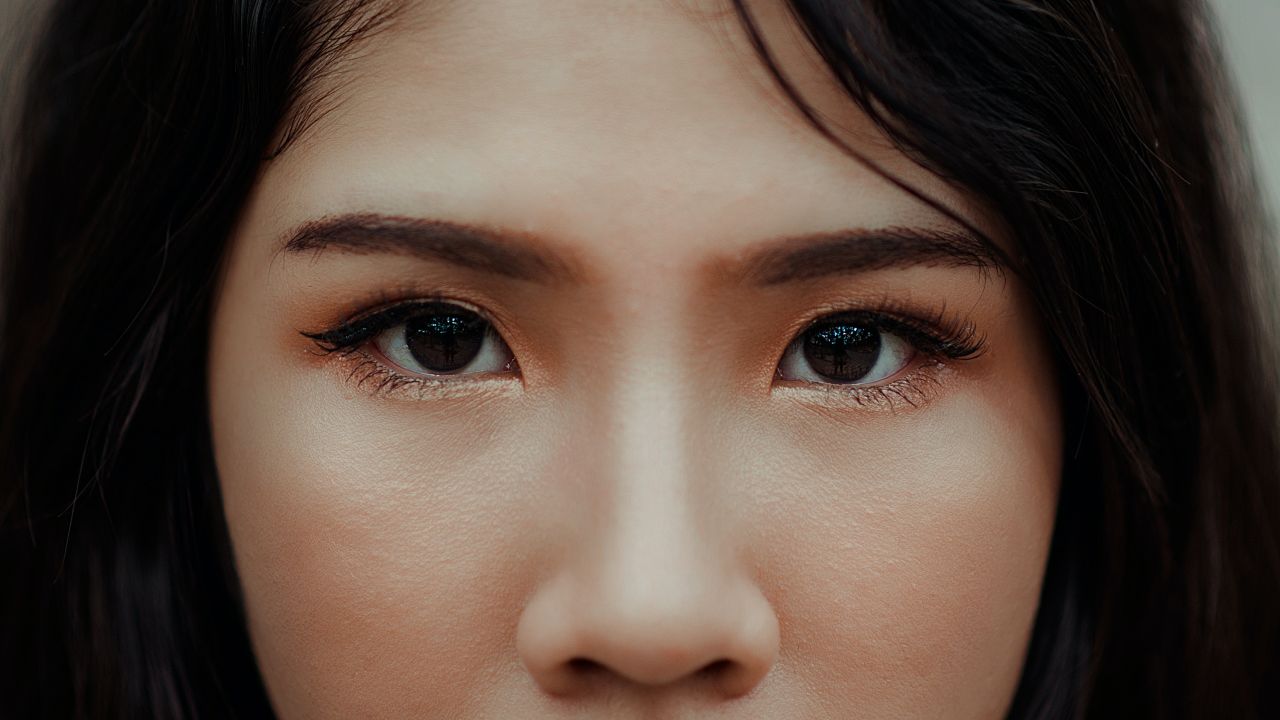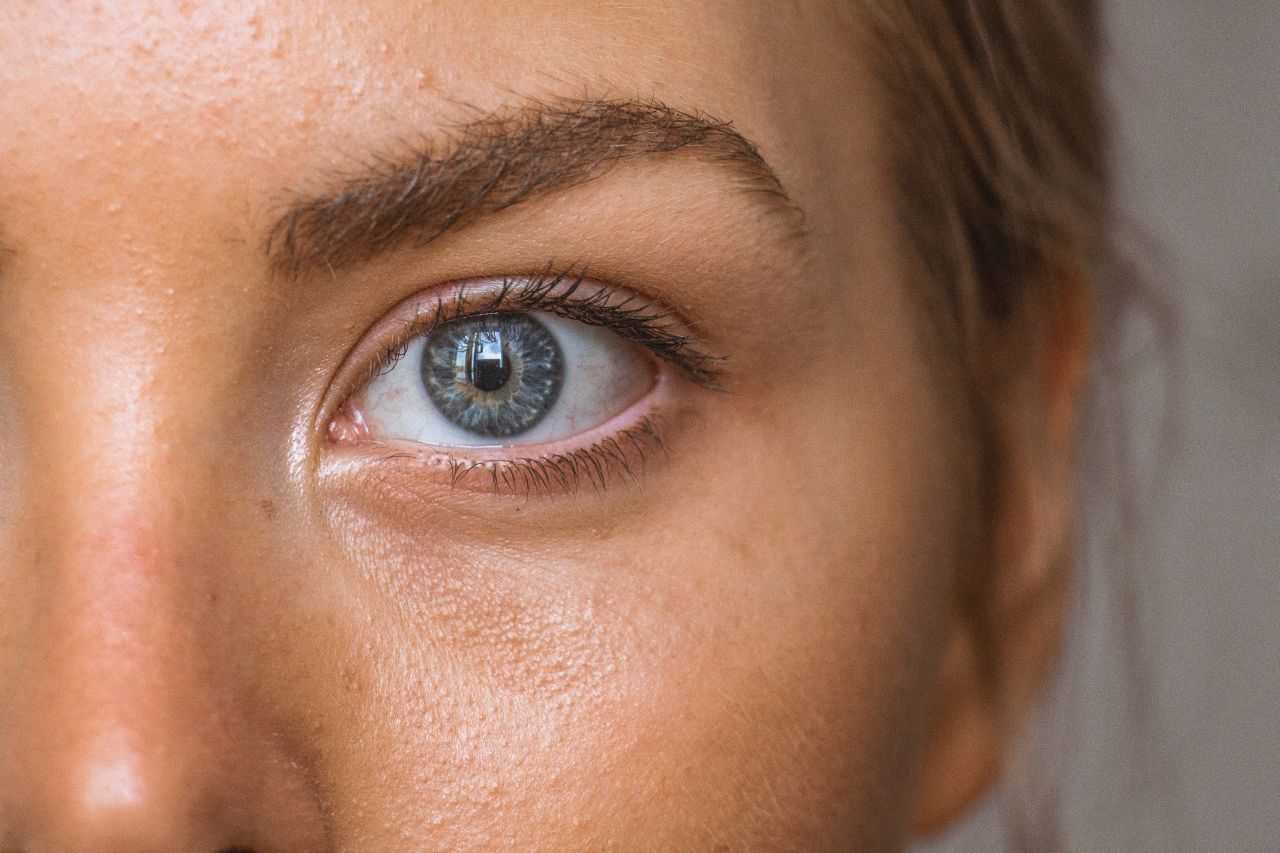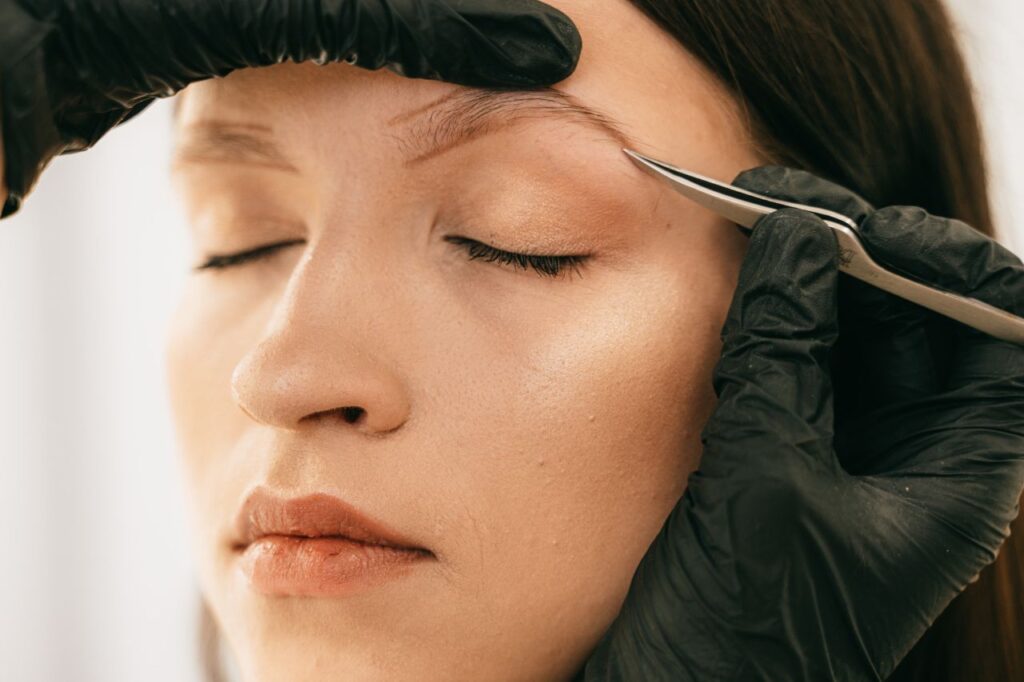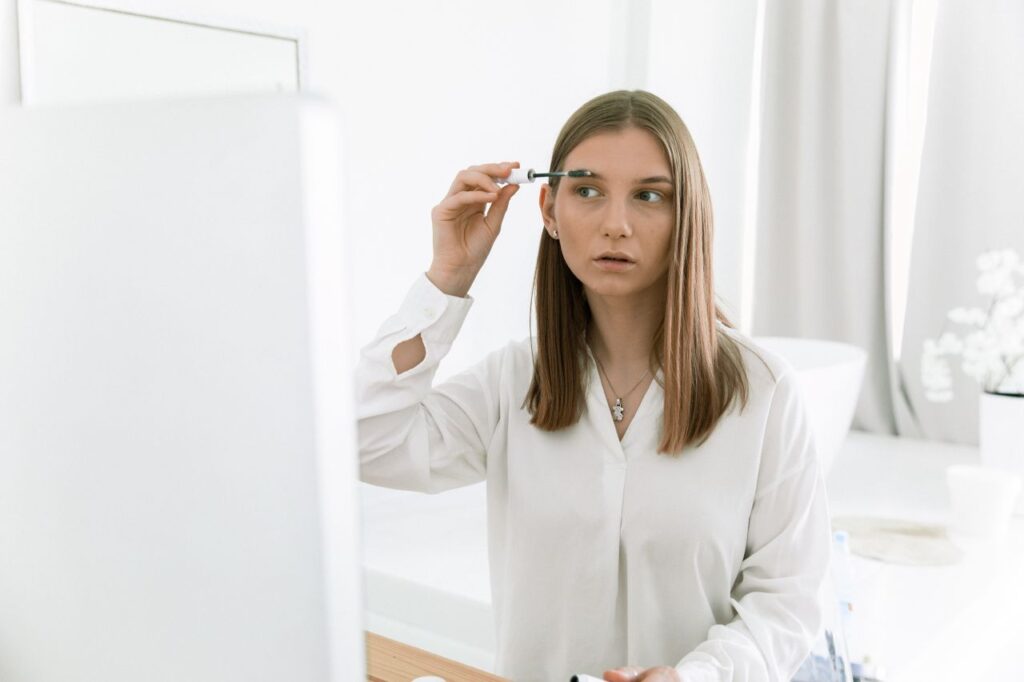Many people have the misconception that microblading and getting eyebrow tattoos are the same thing, but that is not quite correct. Although microblading similarly involves sculpting and thickening the eyebrows, it is not a permanent eyebrow tattoo but a cosmetic one.
The eyebrows play a significant role in our overall facial aesthetic and beauty. The shape, thickness, and symmetry of your eyebrows can make a world of difference in how your face looks overall, drawing attention to your eyes while subtly framing your forehead and nose.
Maintaining well-groomed and symmetrical brows is essential. However, shaping the eyebrows in a specific manner every day and every few hours might be challenging and time-consuming. Microblading and traditional tattooing of the eyebrows, which originated as solutions to a problem, emerged as a result.
Microblading is a semi-permanent tattooing technique that involves implanting pigment into the dermis just beneath the eyebrows. Although the process is relatively similar to traditional eyebrow tattooing, there are significant differences. Microblading, in contrast to eyebrow tattooing, entails the painstaking physical insertion of pigment. Looking for eyebrow tattoo salon? Look no further,Cosmetic Tattoo by Rach got you covered.
What Is Eyebrow Tattooing?
The process of tattooing the brows is identical to the one used for getting any other type of tattoo. Your artist will use electric tattoo needles packed with ink for your tattoo.
The needle will enter the skin quickly and tap the ink into place. Considering that the only real impact you get with traditional tattooing is a form of shading, the final results will look incredibly natural.
However, if the ink is too saturated, the brow's natural arches and hairs will seem like a flat mass of colour. Tattoos last a lifetime, even though the ink may fade and the lines blur. After a brow tattoo has been done, it is exceedingly difficult, if not impossible, to remove it.
Pros
- They are great for adding density to the arch of the brow.
- They typically cost less.
- Long-lasting effects
Cons
- It seems more like a makeup brow than a natural one.
- It will take a longer time for you to feel better.
- The ink may smear or even change colour.
What Is Microblading?
Microblading is a technique used by aestheticians to create the illusion of fuller, thicker eyebrows. A topical anaesthetic lotion will be used first. Then, to replicate the natural appearance of the eyebrow hair, surgeons will make a series of little, discreet incisions. After an opening has been formed, ink is inserted into it.
As a result of the anaesthetic cream and the pinpoint accuracy of the micro blades, this procedure causes minimal discomfort. There really shouldn't be any bleeding at all. Since only a small amount of pigment is used, the colour remains contained in the pinpoint punctures rather than bleeding into the surrounding tissue.
The microblading technique used to create eyebrows will wear out over time. Microblading will maintain its appearance for a few months to a few years, at the very least. You can, however, lengthen the time that the effects last by undergoing further treatment sessions at regular intervals in order to keep the newly attained appearance looking its best.
Pros
- Not too painful.
- Have a speedy recovery.
- Maintain a natural appearance
- It will not change colour.
Cons
- The eyebrows you see here are semi-permanent.
- Maintenance is needed to keep the appearance fresh.
- They are generally more costly.
What Is The Difference Between Eyebrow Tattoos And Microblading?
Microblading and eyebrow tattooing are both aesthetic options for achieving the perfect brow shape. However, the two methods depend heavily on the individual user's preferences. These procedures are distinct from one another in ways that appeal to a wide variety of customers.Check out our range of microblading services to help with your problems.
The following is a comparison of the two procedures:
A Process's Ability To Be Removed
The benefit of microblading, in this case, is that the tattoos can fade away naturally if the client decides they don't like the way they look after getting them. In addition, used brow pigments will gradually lighten, thin out, and become less apparent. So it's possible to hasten the ageing process.
If something goes wrong during this procedure and you are unhappy with the result, you have a few options for having it deleted from your record. However, as seen in the following paragraph, a tattoo on the eyebrows cannot be removed.
Eyebrow Tattoo And Microblading Caused Pain
Microblading and tattooing are invasive because they cause several punctures to the skin's superficial layer. Therefore, it is inevitable that some degree of suffering will be experienced. Some customers have described the sensation of microblading as a slight squeeze, while others have characterised it as pressure. However, no patients mentioned any discomfort.
Both eyebrow tattoo artists and microblade artists utilise numbing treatments to dull the skin before the procedure. This is done all the time in tattoo shops and beauty salons alike. Ask your artist if they use anaesthetics if you're worried about pain throughout the eyebrow tattooing process.
Eyebrow Tattoo And Microblading Application Method
There is a significant distinction between microblading and tattooing the eyebrows, despite the fact that these brow treatments are performed in a manner that is similar to one another. Using a small blade, microblading experts meticulously carve out intricate designs. But tattoo artists use machinery to pump ink into the flesh, making the tattoo permanent.
The microblading process is performed by hand, with the help of a pen-like tool, and with the utmost care and precision by an esthetician. The machines can be set up in a wide variety of ways, and their 7-17 needles allow for a wide range of treatments. However, tattooing the brows can be done mechanically or by hand. The needle bundles in the machine are all of the same sizes. The latter has been gaining ground in recent years.
Microblading ink only travels as far as the basal membrane, which separates the epidermis and dermis. Still, tattoo ink travels far deeper into the dermis and even the lowest layers of the skin.
Ink And Pigments Were Used
Both organic and inorganic pigments in a wide range of hues are suitable for use in microblading. The colour of the ink used for microblading will become less noticeable over time, but the tone will not change. As time passes, the microblading pigment will gradually lighten, giving the wearer a more subtle appearance. The result seems natural even as it gradually disappears.
Microblading, on the other hand, utilises a pigment to create the desired effect, in contrast to eyebrow tattooing, which uses tattoo ink. While pigment fades with time, ink fades in this process. As a result, fading tattoo ink often takes on a subtle blue-green hue, especially around the tattoo's edges.
Both Processes' Appearance And Outlook
Microblading creates a more natural look than eyebrow tattoos, which tend to have a drawn-on appearance and give the impression that the eyebrows have been flattened. With microblading, professionals draw fine hairlike strokes that mimic the texture and shape of each brow hair.
The lines created by this method become nearly unnoticeable because they blend in with your natural brows. Furthermore, with the help of a talented microblading artist, the treated areas can be made to look even denser than their natural counterparts.
However, even the most skilled tattoo artists need help replicating the delicate strokes of microblading when using the tattoo needle typically used for eyebrow tattooing. A tattoo somehow hinders your ability to focus and concentrate. The tattooed eyebrows look more like you used brow fillers than your natural brows because of their stronger appearance.
FAQs About Eyebrow Tattoo And Microblading
Yes. When a tattoo has significantly faded, it is possible to get microblading done over it as long as extra precautions are taken and sufficient care is taken.
The microblading will not be able to stay on your skin due to the water, and the water will also cause the pigment to fade and loosen. Therefore, take extra precautions to ensure that it does not become wet.
Yes. The eyebrows will have a soft and natural appearance after microblading. So, when you want your eyebrows to look beautiful all the time, microblading is a service that will pay for itself many times over.
- Let it dry and heal for 24-48 hours.
- Use face wipes to cleanse the forehead area.
- You can also use cotton and lukewarm water for gentle cleansing.
- Stay out of the sunlight.
- Do not use makeup and cleanser for about two weeks after the treatment.
- Apply the healing cream as needed.
- Do not rub or scratch the area; itching is normal.
- Keep your hair away from your eyebrow lines.
The primary distinction between microblading and ombre eyebrow tattoos is that the former utilises shading while the latter does not. Microblading allows for more natural-looking brows. Contrarily, microblading is not a form of shading like the other methods. Both the ombre and powder eyebrow tattoo styles, as well as microblading, can be done on a variety of skin tones.
The Treatments' Lifespan
When comparing the lifespan of an eyebrow tattoo to that of microblading, there is a huge gap between the two.
Microblading Lifespan
Microblading is a form of permanent makeup application that leaves a subtle, natural look that lasts anywhere from one to two years, depending on your skin type and aftercare routine.
Depending on your tastes, this fades with time, and you may need periodic touch-ups with microblading.
If you ever get sick of this style, you can let them fade away, which is another advantage of this method. The pigments will fade from their original dark colours to a lighter shade. Likewise, the ageing process can be sped up.
There are a number of methods available for fixing botched microblading.
Lifespan Of A Traditional Eyebrow Tattoo
On the other hand, the conventional eyebrow tattoo will be around for a long time.
There is no way to erase the ink once it has been inserted. Though it will weaken over time, it will never become imperceptible. One disadvantage of eyebrow tattoos over microblading is that the ink's colour may shift from black to green or blue over time. Over time, the colour loses its lustre and vibrancy.
Which Is More Painful: Eyebrow Tattoo Or Microblading?
Microblading and tattooing can cause pain because they repeatedly puncture the delicate skin of the face. However, most microblading clients do not report discomfort during the procedure, while some have compared it to a mild pinch or pressure.
Tattoo and microblading professionals apply numbing treatments to the brow area before beginning the procedure since the skin there is thinner and more sensitive than elsewhere. Permanent makeup artists and tattoo artists both follow this protocol.
Inquire about the usage of anaesthetics and discuss your concerns with the tattoo artist if the thought of pain during the eyebrow tattooing process is making you uneasy. See more of our eyebrow feathering services.
Conclusion
Microblading is a type of semi-permanent tattooing in which pigment is implanted into the dermis just below the eyebrows. It's a lot like getting your eyebrows tattooed, but the pigment has to be inserted manually. Brow tattoos are applied using the same rapid-entry electric tattoo needles and tapping motions that are standard for all tattoos. However, if the ink is applied too thickly, the brown's natural arches and hairs will be obscured by a solid mass of colour. So instead, aestheticians employ microblading to give the impression of larger, fuller eyebrows.
Although both microblading and eyebrow tattooing can help you achieve a beautiful brow shape, they serve different audiences in different ways. Microblading can last from a few months to a few years, but like any tattoo, it will fade with time. Microblading and tattooing are intrusive because they create numerous punctures in the superficial layer of skin, necessitating regular upkeep to maintain the aesthetic. Customers have reported feeling a tiny squeezing during microblading, while others have characterised the experience as pressure. Microblading and eyebrow tattooing are both forms of permanent makeup. However, microblading is performed by an esthetician using a pen-like tool to draw detailed patterns on the skin. In contrast, tattooing is done by pumping ink into the skin using machinery.
In comparison to eyebrow tattoos, which can look drawn on and flatten the eyebrows, microblading creates a more natural effect. Over time, the microblading ink's colour will fade, but the tone will remain the same. It takes talented tattoo artists to recreate the fine strokes of microblading, but the results are semi-permanent brows that look just like real ones. The typical lifespan is 1-1.5 years, although that can be extended to 2-3 years with proper maintenance and care. The results of microblading can endure from one to two years, depending on the patient's skin type and aftercare.
Although it may fade over time, there are a variety of options for restoring poorly done microblading. Although some customers may experience pain, this is not typically reported. Customers who are worried about experiencing pain during the eyebrow tattooing process may talk to their tattoo artist about the possibility of using anaesthetics before the procedure begins.
Content Summary
- Many people have the misconception that microblading and getting brow tattoos are the same thing, but that is not quite correct.
- Although microblading similarly involves sculpting and thickening the eyebrows, it is not a permanent eyebrow tattoo but a cosmetic one.
- Microblading is a semi-permanent tattooing technique that involves implanting pigment into the dermis just beneath the eyebrows.
- Although the process is relatively similar to traditional eyebrow tattooing, there are significant differences.
- The process of tattooing the brows is identical to the one used for getting any other type of tattoo.
- Microblading is a technique used by aestheticians to create the illusion of fuller, thicker eyebrows.
- As a result of the anaesthetic cream and the pinpoint accuracy of the micro blades, this procedure causes minimal discomfort.
- The microblading technique used to create eyebrows will wear out over time.
- Microblading will maintain its appearance for a few months to a few years, at the very least.
- Maintain a natural appearance. It will not change colour.
- Maintenance is needed to keep the appearance fresh.
- Microblading and eyebrow tattooing are both aesthetic options for achieving the perfect brow shape.
- However, as seen in the following paragraph, a tattoo on the eyebrows cannot be removed.
- Microblading and tattooing are invasive because they cause several punctures to the skin's superficial layer.
- Some customers have described the sensation of microblading as a slight squeeze, while others have characterised it as pressure.
- Both eyebrow tattoo artists and microblade artists utilise numbing treatments to dull the skin before the procedure.
- Ask your artist if they use anaesthetics if you're worried about pain throughout the eyebrow tattooing process.
- There is a significant distinction between microblading and tattooing the eyebrows, despite the fact that these brow treatments are performed in a manner that is similar to one another.
- But tattoo artists use machinery to pump ink into the flesh, making the tattoo permanent.
- However, tattooing the brows can be done mechanically or by hand.
- Microblading, on the other hand, utilises a pigment to create the desired effect, in contrast to eyebrow tattooing, which uses tattoo ink.
- Furthermore, with the help of a talented microblading artist, the treated areas can be made to look even denser than their natural counterparts.
- However, even the most skilled tattoo artists need help replicating the delicate strokes of microblading when using the tattoo needle typically used for eyebrow tattooing.
- The tattooed eyebrows look more like you used brow fillers than your natural brows because of their stronger appearance.
- Though the average lifespan of microblading is between 1 and 1.5 years, there is a lot of contradictory data.
- When comparing the lifespan of an eyebrow tattoo to that of microblading, there is a huge gap between the two.
- There are a number of methods available for fixing botched microblading.
- On the other hand, the conventional eyebrow tattoo will be around for a long time.
- One disadvantage of eyebrow tattoos over microblading is that the ink's colour may shift from black to green or blue over time.
- Microblading and tattooing can cause pain because they repeatedly puncture the delicate skin of the face.
- Inquire about the usage of anaesthetics and discuss your concerns with the tattoo artist if the thought of pain during the eyebrow tattooing process is making you uneasy.






